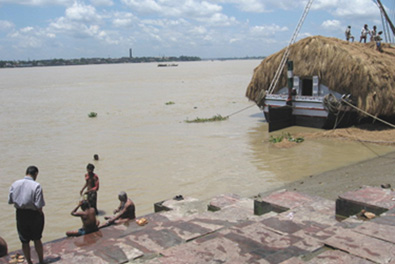Conservationists are delighted over the recent sighting of six rare Indus River dolphins (Platanista minor) in northwestern India, an area that traditionally is not known as a dolphin habitat – as the species had previously been thought to be restricted to river systems in neighbouring Pakistan. The sightings occurred in the Harike barrage on the Beas and Sutlej river systems, in the Amritsar district of Punjab.
It is reported that the dolphins were first seen by forest guards and villagers who informed the Divisional Forest Minister. After taking photographs of the dolphins, the minister alerted conservationists working in the area of this extraordinary discovery. A survey team was quickly established consisting of members from WWF India and other aquatic mammal experts, and after survey work over three days the team was excited to confirm the presence of at least six dolphins in the Beas-Sutlej river system.
River dolphins inhabit some of the world’s major river systems, including the Ganges and the Amazon in addition to the Indus. However, the major river basins in Asia are also home to over 15% of the world’s population, making these highly endangered and highly unusual dolphins extremely vulnerable to increasing human development and expansion.
One of the greatest threats to the survival of the Indus River dolphin is the ever-increasing demand for water. Rising population demands on the predominantly arid region of Pakistan together with rapidly developing agriculture and industry have led to escalating pressure on the region’s limited water resources. Decreasing river flow due to extensive damming and drought are also major factors affecting river dolphin populations in the Indian sub-continent.
Although deliberate killing of dolphins for meat and oil has decreased following a hunting ban, Indus River dolphins are still affected by by-catch from fisheries and accidental collisions with vessels, with occasional poaching further adding to population declines.
Although the recent sightings are good news for Indus River dolphins, their closest relative the Ganges River dolphin (Platanista gangetica) may have been severely affected by a chemical spill in the Brahmaputra River, one of the two river systems in which this species is found. Today, the Brahmaputra may be home to as few as 250 surviving river dolphins, and this recent spill could spell disaster for the fragile population.
The current status of the Indus and Ganges River dolphins echo the situation of the Yangtze River dolphin or baiji 20 years ago. If nothing is done to increase protection of these species, then history is likely to repeat itself and we will have the depressing task of watching another two river dolphin species join the growing list of extinct mammals.

